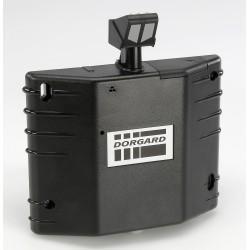
Briton 996 Door Closer | Electromag Hold Open or Swing Free
Code: DCB9961
The Briton 996 door closer has hold open or swing free function and can be used on fire doors. Select different power sizes and applications below.
Door Controls Direct has proudly partnered with the NHS Emergency and Critical Care Appeal. Find out more here.

The very existence of fire doors is for the protection of the occupants of a building. In the event of a fire, a closed and sealed door will prevent fire and smoke from spreading into corridors and stairs for a period of time (usually up to 30 minutes). This will protect the vital areas which provide a way out for people. However, they only serve their purpose if they are kept shut at all times.
Unfortunately, staff sometimes feel that fire escape doors restrict their movements around a building when they are performing their work duties, particularly when unloading or loading goods. This is often the reason behind many doors being wedged open with a variety of items, even a fire extinguisher on occasion! This is clearly an error of judgement because occasionally these essential doors can be left propped open for longer periods of time, often to the extent of becoming a permanent feature, leaving both staff and members of the public vulnerable in the event of a fire.
However, there are plenty of reasons why we all need to be vigilant with maintaining that fire doors are kept shut, some of which we will highlight here and form part of the annual Fire Door Safety Week campaign which launched in 2013.
It is true to state that fire doors often do get in the way when you are trying to carry unwieldy or heavy objects, using a wheelchair or pushing a child in a buggy. They are heavy which can cause difficulty for less mobile people, particularly if the fire door closers feel like they are trapping you mid-transfer.
However, this inconvenience is a small price to pay against the possibility of being the cause of the death of others simply because we chose to wedge fire doors open rather than having it serve its purpose and remaining firmly closed. If you need a compliant solution to hold open a fire door then an electromagnetic door closer can be installed, or an electromagnetic door holder.
Another potentially life saving measure is having effective and efficient fire drill procedures in place. You can read about this in another blog, The Importance of Fire Drills.
 Posted by: Door Controls Direct
Posted by: Door Controls Direct

Code: DCB9961
The Briton 996 door closer has hold open or swing free function and can be used on fire doors. Select different power sizes and applications below.
 100+
IN STOCK
100+
IN STOCK



Code: DORGARDB
The Dorgard fire door retainer is a BS EN 1155 compliant, wire-free solution for legally holding open fire doors that you can install in under 5 minutes.
Select from black or white finish housing (floor fixing foot not included).
 50
IN STOCK
50
IN STOCK







 Previous Post
Previous Post
Comments